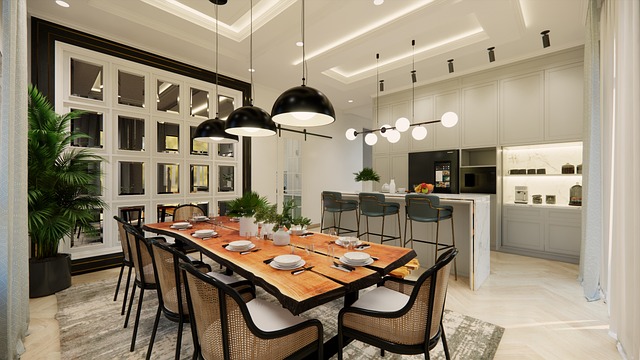Maximizing Natural Elements In Home Improvement

Incorporating Biophilic Design Principles
Incorporating biophilic design principles into your home involves creating a sensory-rich environment that enhances your connection to nature. Start by using natural materials like wood, stone, and bamboo, which not only add an organic touch but also improve air quality. Large windows and open spaces can maximize natural light, reducing reliance on artificial lighting. Integrate indoor plants to boost oxygen levels and bring a sense of tranquility. Water features such as small fountains can add a soothing auditory experience. Choose calming nature-inspired colors, such as greens and browns, for your walls. Art that depicts natural scenes or textures further intensifies the connection to the outdoors. By connecting indoor spaces with nature, you enrich your living environment, enhance mood and productivity, and create a serene yet vibrant home.
Choosing Sustainable Building Materials
When choosing sustainable building materials, one can significantly reduce the environmental impact of home improvement projects. Opt for materials with a low carbon footprint, such as reclaimed wood, recycled metal, or bamboo, which grow quickly and are renewable. Consider certified materials that ensure sustainable harvesting and processing methods. Linoleum or cork flooring can be excellent choices due to their biodegradability. Investigate the energy efficiency of materials like double-glazed windows and insulated panels that contribute to energy-saving initiatives. Whenever possible, source materials locally to reduce transportation emissions and support local economies. Be conscious of the durability and longevity of materials to decrease the need for frequent replacements. By prioritizing sustainability, homeowners contribute positively to the environment while ensuring their homes are built with quality, longevity, and ecological responsibility in mind.
Utilizing Natural Light and Ventilation
Maximizing natural light and optimal ventilation can transform living spaces, making them more inviting and energy-efficient. Start by arranging furniture to avoid obstructing windows, and consider installing larger windows or skylights to flood areas with daylight. Light-colored walls and reflective surfaces, like mirrors, can help distribute natural light throughout your home. Properly positioned window shades can manage light levels, reducing the need for artificial lighting. For ventilation, create cross-ventilation patterns by positioning windows and vents strategically across from each other. Ceiling fans can enhance airflow without the energy usage of air conditioning. Proper ventilation not only provides fresh air but also controls humidity, reducing the risk of mold. By effectively utilizing natural resources, homeowners can enjoy healthier, more comfortable living spaces while also lowering energy consumption.
Integrating Water Features for Relaxation
Integrating water features into your home can provide a soothing oasis and promote relaxation. Consider installing a small indoor fountain or waterfall, which can create a calming auditory backdrop that masks urban noise. These water features also add moisture to the air, improving humidity levels in dry environments. Outdoor spaces benefit from ponds or cascading water walls that foster a serene setting. When incorporating water features, consider the practicality and maintenance involved; opt for models with low energy usage and easy-to-clean components. Additionally, place water features in areas where their aesthetic and tranquil benefits can be fully appreciated. The gentle movement of water induces calmness and a connection to nature, providing a peaceful retreat within your home. By embracing the element of water, you generate a calm, rejuvenating atmosphere that enhances well-being.
Enhancing Indoor Greenery and Plant Life
Introducing indoor greenery and plant life significantly enriches the home’s environmental quality and aesthetic appeal. Select a variety of plants suited to your home’s light conditions, such as ferns for low-light or succulents for brighter spots. Indoor plants improve air quality by filtering pollutants and producing oxygen, contributing to a healthier living environment. Vertical gardens or hanging planters can maximize limited space, creating lush, green walls that serve as living art. Consider incorporating potted herbs in the kitchen for culinary benefits and aromatic pleasure. Regularly care for and rotate plants to maintain their health and vibrancy. By thoughtfully integrating plant life, you not only enhance your home’s visual appeal but also support mental wellbeing, reduce stress, and cultivate a peaceful, natural habitat indoors.